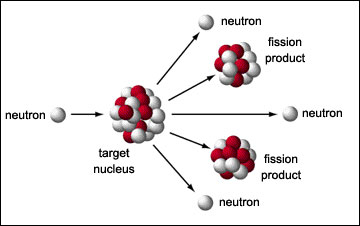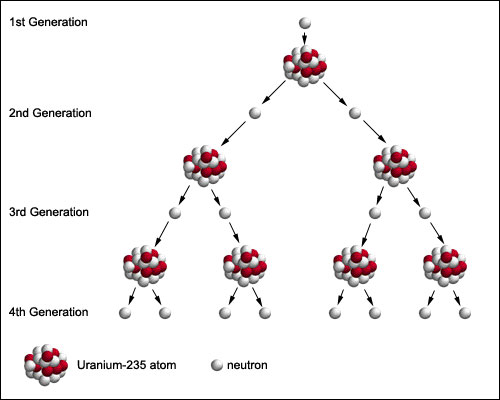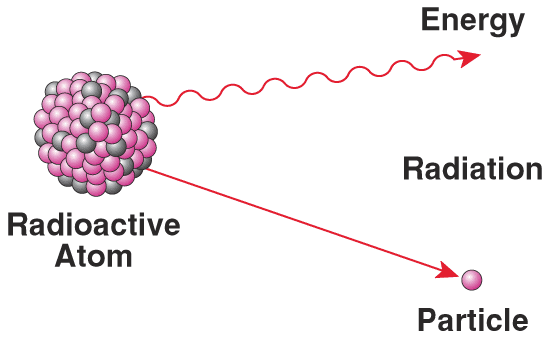
The Basics of Nuclear Energy — An Overview
Nuclear power uses the energy created by controlled nuclear reactions to produce electricity.
Fission

Source: Atomicarchive.com at: http://www.atomicarchive.com/Fission/Fission1.shtml
The most commonly used nuclear reaction for power generation is nuclear fission. Nuclear fission is the splitting of an atom's nucleus into parts (lighter nuclei that are different from the parent and neutrons) by capturing a neutron. Nuclear fission produces heat (also called an exothermic reaction), because if you add all the masses together of the products of reaction you do not get the starting mass. That loss of mass is the heat and electromagnetic radiation produced during fission, and it produces large amounts of energy that can be utilized for power. Fission produces neutrons which can then be captured by other atoms to continue the reaction (chain reaction) with more neutrons being produce at each step. When a reaction reaches critical mass, the reaction becomes self sustaining. If too many neutrons are generated, the reaction can get out of control and an explosion can occur. To prevent this from occurring, control rods that absorb the extra neutrons are interspersed with the fuel rods. Uranium-235 is the most commonly used fuel for fission. Nuclear fission can produce 200 MeV of energy.

Source: Atomicarchive.com at: http://www.atomicarchive.com/Fission/Fission1.shtml
Fusion

Source: Atomicarchive.com at: http://www.atomicarchive.com/Fusion/Fusion1.shtml
Nuclear fusion is another method to produce nuclear energy. Two light elements, like tritium and deuterium, are forced to fuse and form helium and a neutron. This is the same reaction that fuels the sun and produces the light and heat. Unlike fission, fusion produces less energy (~18 MeV), but the components are more abundant and cheaper than uranium.
Radioactive Decay
Radioactive Decay occurs when an unstable nucleus losses a particle and electromagnetic radiation. This decay produces a daughter atom that may also be unstable and occurs at an average rate, which is called the half-life (the amount of time it takes for one half of the parent material decay to the daughter). While radioactive decay has been utilized for deep-space probes (using plutonium-238 pellets), it does not create the amount of energy that fission or fusion does and therefore it has limited potential for large power-producing facilities.

Links to more information
Any mention or link regarding a product, organization, company, or trade name is for information only and does not imply endorsement by the Bureau, NMT, or the State of New Mexico (see more).
- American Nuclear Society
- How Stuff Works: Nuclear Power
- ABC's of Nuclear Science
- History of Nuclear Energy (pdf from DOE)
- Think Quest: Nuclear Energy - The Physics
- Nuclear Energy Basics (DOE)
- Wikipedi - Nuclear Energy
- Atomic Archive: Science
- Freedom from Fission: Science
- US Nuclear Energy
- World Nuclear Association: History
- The Nuclear Tourist


